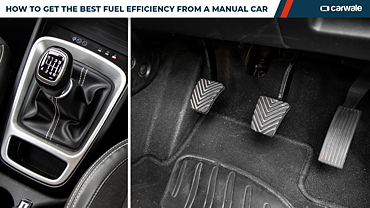
The Land Rover Discovery Sport arrived in the Indian market with a lot of fanfare. So much so that Land Rover bagged over 200 bookings even before the official launch of the car. And now that the Discovery Sport is in the showrooms, premium mid-size SUV buyers have yet another option to consider besides the popular German duo – Audi Q5 and BMW X3.
With base ex-showroom prices for all three SUVs nudging around half a crore rupee mark, the new Discovery Sport is quite closely matched with the Audi Q5 and the BMW X3. Until we have a go in all three premium mid-size SUVs for a comprehensive shootout, here’s an on-spec battle based on their in-depth specifications.

The Discovery Sport replaces the old Freelander and is the first member of the new Discovery family. Its design echoes the Range Rover Evoque in many ways. Bits such as the twin-slat grille, chunky front bumper, LED fog lamps and a stylish pair of headlights and taillights all come from familiar modern Range Rover territory.
The Q5 and the X3, on the other hand, are relatively older products and pretty much evident in their design. Both these vehicles boast of simple styling cues although it’s the sportier looking X3 that comes in second, ahead of the Q5.

As for the dimensions, the Discovery Sport measures 4600mm in length, 2069mm in width and stands tall at 1724mm. In comparison, the Q5’s dimensions stand at 4629mm, 1898mm and 1653mm respectively. This makes the Discovery Sport shorter than the Audi although considerably wider and taller than the latter. The situation is pretty much consistent when compared to the BMW X3 (4657mm, 1881mm and 1678mm respectively).


Despite its length deficit over both the Q5 and the X3, the Discovery Sport is the only vehicle here to be offered with a seven-seater configuration. Thanks to a new multi-link rear axle, Land Rover claims it has managed to offer ample cabin space even behind the second row.
Land Rover’s interior design aren’t particularly striking and more often than not, the brand plays it safe with simple, vertical design cues for the dashboard – something that is evident in the new Discovery Sport as the layout of the dashboard is fairly simple and quite easy on the eye. In comparison, the Q5 and the X3’s interior are relatively funky and make good use of the driver-centric layout.

As for features, the base-spec STD4 Discovery Sport gets a full size spare wheel, Land Rover audio system, stability control, roll stability control, climate control and lots more as standard. The top-spec HSE Luxury SD4, on the other hand, is generously equipped with standard features including adaptive xenon headlights, premium leather seats, 10-way electrically powered front seats with memory function, customizable interior mood lighting, Meridian surround sound audio system with 17 speakers and a whole lot more.
The Audi Q5, too, comes fairly loaded with features such as premium leather seats, 3-zone climate control, Audi Drive Select, rear view camera and of course, Audi’s famed quattro all-wheel drive system. Meanwhile, the Discovery Sport comes with Land Rover’s capable Terrain Response technology from more expensive Range Rover models.
The BMW X3 also gets all the creature comforts we have come to expect from a German premium SUV. There’s bi-xenon headlights, BMW’s iDrive infotainment system, electrically-powered front seats, sporty looking alloy wheels and some more.


Much to the disappointment of many, Land Rover decided not to bring their all-new 2-litre Ingenium diesel engine from the XE sedan. Instead, the India-spec Discovery Sport gets the old 2.2-litre, four-cylinder motor from the Evoque. Here this engine can be had in two different state of tunes - 150bhp or 190bhp. Both these engines are paired to a ZF-derived 9-speed automatic gearbox.
The Q5, on the other hand, can be had with either a 2-litre, four-cylinder TDI diesel engine with 175bhp or the bigger 3-litre V6 TDI unit with 240bhp of power. The gearbox option for both these models comes in the form of a 7-speed S-tronic automatic unit.
Like the Q5, the X3 is also being offered with 2- and 3-litre diesel engine options. While the former displaces 2-litres and produces 190bhp/400Nm, the more powerful 3-litre, in-line 6 cylinder engine puts out 258bhp of power and 560Nm of torque.

All three vehicles you see here are locally assembled and not fully imported in to the country, which means one can expect competitive prices for their size. Speaking of which, the Discovery Sport range starts off with the S version which costs Rs 46.10 lakh, going all the way to Rs 62.18 lakh for the top-spec HSE Luxury 7-seater version. Compare these to the X3’s prices and there isn’t much of a difference to be found, with the BMW ranging between Rs 46.90 lakh and Rs 59.90 lakh.
By far, the Audi is the most expensive of the trio with the top-spec Q5 45 TDI Technology S Line version coming in at Rs 62.95 lakh. Then again, the latter is also better quipped and packs in a powerful 3-litre V6 engine and therefore justifies the price difference. And while we are at it, so does the 3-litre engine equipped X3 30d M Sport which is the least expensive of the lot at Rs 59.90 lakh. The Discovery Sport, then, has a tough battle to win against the popular German models, however, there’s no denying the fact that the vehicle’s 5+2 seating arrangement and the attractive exterior design is sure to attract a lot of potential buyers.





